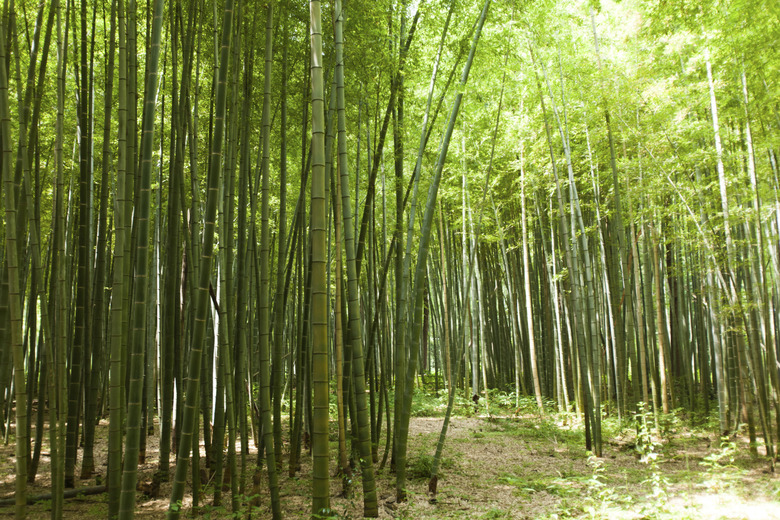Characteristics & Adaptations Of Bengal Bamboos
Bengal bamboo (Bambusa tulda) is a large species of bamboo characterized by thick green canes, sometimes with two or three yellow stripes on the lower part of the canes. It's not cold hardy, but it's well behaved compared to some other bamboo species, so it's a safe choice for roomy landscapes.
Bengal bamboo (Bambusa tulda) is a large species of bamboo characterized by thick green canes, sometimes with two or three yellow stripes on the lower part of the canes. It's not cold hardy, but it's well behaved compared to some other bamboo species, so it's a safe choice for roomy landscapes.
Cultural Requirements
Bengal bamboo is native to India and Southeast Asia, and it's adapted to warm, tropical climates. It prefers rich soil, a moderate amount of moisture and exposure to full sunlight. The species won't survive the winter in northern climates in the United States; it can generally tolerate minimum winter temperatures of no lower than 27 degrees Fahrenheit, making it hardy only to United States Department of Agriculture hardiness zone 9b.
Size
In its natural habitat under ideal growing conditions, Bengal bamboo can reach a height of 70 feet, with individual canes up to 4 inches in diameter. The plant is unlikely to achieve that size in cultivation, but in any case it's a species of impressive size that demands plenty of space in the landscape. Placing individual plants between 20 and 40 feet apart will help to prevent overcrowding.
- Bengal bamboo (Bambusa tulda) is a large species of bamboo characterized by thick green canes, sometimes with two or three yellow stripes on the lower part of the canes.
- In its natural habitat under ideal growing conditions, Bengal bamboo can reach a height of 70 feet, with individual canes up to 4 inches in diameter.
Growth Habit
Like all bamboo species, Bengal bamboo grows very quickly. It is a clumping species, however, so it is not nearly as invasive as some other bamboo species. Clumping bamboos grow from relatively slow-spreading underground rhizomes that form self-contained clumps, as opposed to running bamboos, which sprout from fast-growing lateral rhizomes that are difficult to contain. Bengal bamboo grows in clumps that are not dense enough to be especially useful as a screen or hedge, but its openness does result in attractive, shady stands of tall canes.
Flowering and Clump Death
Bengal bamboo has a very long life cycle that culminates in the simultaneous flowering of all the canes in a colony, followed by the death of the entire colony. The plants grow consistently throughout many growing seasons, producing new rhizomes and canes but without flowering, until the plant reaches a mature age specific to its species; the length of Bengal bamboo's life span seems to be about 48 years, according to the Annals of Botany. At the end of the growth period, the plant flowers, produces seed and dies. Given the length of the life cycle, the dieback of Bengal bamboo isn't a significant concern in the short term, but it will eventually lead to the loss of mature plants.
- Like all bamboo species, Bengal bamboo grows very quickly.
- Bengal bamboo has a very long life cycle that culminates in the simultaneous flowering of all the canes in a colony, followed by the death of the entire colony.
